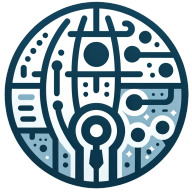How to Create Continuous Improvement in Employee Training Programs: 7 Practices
Discover proven strategies to revolutionize employee training programs, drawing on insights from industry experts. This article delves into effective practices that ensure sustainable improvement and engagement. From feedback loops to storytelling techniques, elevate training with methods vetted by those at the forefront of professional development.
- Conduct Reflection and Refinement Sessions
- Incorporate Storytelling and Thoughtful Questions
- Hold Monthly Feedback Huddles
- Implement Feedback Loop Framework
- Use Post-Training Feedback Loops
- Facilitate Post-Training Debrief Sessions
- Integrate Insight Sessions for Daily Interaction
Conduct Reflection and Refinement Sessions
Creating a culture of feedback and continuous improvement in employee training programs starts with open communication and fostering trust. One practice I've found highly effective is conducting regular "reflection and refinement" sessions with my team. These are structured but informal discussions held at the end of each project or busy season. During these sessions, every team member is encouraged to share their thoughts on what went well, what could have been done better, and any ideas for improving our processes. To set the tone, I always lead by example, openly discussing areas where I think I could improve and asking for honest feedback on my leadership. This approach not only demonstrates vulnerability and accountability but also shows that I genuinely value their input.
Over my 15 years in the gardening and landscaping industry, and as a certified horticulturist, I've seen how practical, hands-on training impacts team performance. For instance, after introducing these sessions, I noticed a sharp improvement in our efficiency when tackling complex landscaping projects. One of my team members once suggested a tweak to our job preparation checklist that significantly reduced downtime. By creating an environment where their suggestions are implemented and celebrated, I've been able to reinforce a sense of ownership and pride in our work. This continuous loop of feedback and action has not only helped my team grow but also improved the quality of service we deliver to clients. It's a reminder that even as a leader, you're always learning and evolving alongside your team.
Incorporate Storytelling and Thoughtful Questions
Creating a culture of feedback and continuous improvement around employee training programs requires fostering an environment where dialog feels natural and engaging rather than obligatory. One powerful way to achieve this is by training managers to incorporate storytelling and thoughtful questions into team interactions. Stories uniquely humanize even the driest of topics, making training more relatable and memorable. For example, if a recent training focused on self-awareness, a manager might share a story about a surprising insight they gained, how they applied it in their role, and its impact. Sharing real stories demonstrates vulnerability and openness and sets the tone for employees to reflect and share their own experiences.
Following a story with an inviting question, such as "What's something you took away from the training that you will begin to apply?" sparks deeper reflection and encourages employees to connect the training to their experiences. This practice helps shift training from being seen as a one-time event to an ongoing growth journey. When managers regularly model this behavior, it builds trust and creates a culture where feedback and discussion about training feel like natural extensions of the workplace. Over time, these conversations reinforce the value of continuous learning, foster team cohesion, and empower employees to contribute their insights and ideas for improvement.

Hold Monthly Feedback Huddles
Creating a culture of feedback and continuous improvement around employee training programs starts with open communication and ensuring employees feel heard and valued. At Ponce Tree Services, I've found that building trust within my team is the foundation. One practice we use is conducting monthly "feedback huddles," where employees openly share their experiences with recent training and identify areas where they feel they need more support. These meetings are collaborative and judgment-free, focusing on actionable takeaways rather than criticism. For example, when we implemented a new safety protocol for tree climbing, my team initially struggled with some of the techniques. By fostering a space where they felt comfortable sharing challenges, we were able to adjust the training program to include more hands on demonstrations and practice sessions. This not only improved their skills but also reduced job-related accidents within six months.
My experience as a certified arborist and years of hands-on work gave me the insight to see that training programs should be dynamic, not one size fits all. As someone who started in this industry at a young age and worked my way up, I've learned the importance of tailoring training to match the strengths and learning styles of the team. For example, when new employees join, I leverage my TRAQ certification knowledge to train them in tree risk assessment in ways that connect directly to real-world scenarios. Combining my technical expertise with continuous feedback has helped build a team that feels empowered, supported, and ready to grow alongside the business. This practice has not only improved employee retention but has also elevated the quality of service we deliver to our clients.

Implement Feedback Loop Framework
Creating a culture of feedback and continuous improvement in employee training programs starts with making feedback a regular, structured part of the process rather than something occasional or reactive. One practice I've implemented successfully is what I call the "feedback loop framework," which integrates real-time feedback into training sessions and follows up with monthly review meetings where employees and trainers openly discuss what's working and what isn't. For example, in one business I coached, we created an interactive feedback process during a sales training program. After each training module, employees completed anonymous surveys and participated in small group discussions to share insights on the material and suggest improvements. Trainers also gave immediate, actionable feedback during role-play scenarios, ensuring that employees saw training as a two-way conversation rather than just an information dump. This not only improved engagement but also led to a 23% increase in sales performance over three months because employees felt heard and training content became more tailored to their specific challenges. This approach comes directly from years of experience helping businesses enhance their internal operations and from my study of what drives sustainable growth in companies. With my MBA in finance and decades of coaching hundreds of businesses globally, I've seen time and again how empowering employees to shape their own development produces measurable results. When people feel their input matters, they invest more effort into their work and become more willing to adapt and grow. In this case, the business went from struggling with low employee morale and inconsistent results to having a highly motivated team that consistently exceeded targets. Creating this kind of environment isn't just about improving training programs; it's about fostering a culture where everyone feels ownership of their success and the business's success.
Use Post-Training Feedback Loops
Creating a culture of feedback and continuous improvement around employee training programs starts with building trust and showing that feedback isn't just welcome—it's essential. Employees need to see their input valued and acted upon, creating a cycle of collaboration that strengthens both the training and the workplace culture.
One key practice is implementing post-training feedback loops. After each training session, provide employees with multiple ways to share their thoughts, such as anonymous surveys, small group discussions, or one-on-one check-ins. Ask specific questions about what worked, what didn't, and how the training applies to their day-to-day roles. Keep it simple and actionable—this shows you're genuinely interested in making improvements, not just ticking a box.
The crucial step is acting on the feedback you receive. Share a summary of what you heard with the group and explain how you'll use their insights to adjust future training. For example, if employees feel a session was too theoretical, you can incorporate more hands-on activities next time. This follow-through reinforces that feedback leads to meaningful changes, encouraging more open dialogue moving forward.
By regularly asking for input and visibly applying it, you create a sense of ownership among employees—they feel invested in the success of training programs because they helped shape them. Over time, this collaborative approach fosters a culture where feedback is normalized, training stays relevant, and continuous improvement becomes a shared goal.

Facilitate Post-Training Debrief Sessions
Creating a culture of feedback and continuous improvement around employee training programs begins with fostering open communication and emphasizing shared growth. At The Alignment Studio, I prioritize creating an environment where feedback is seen as a collaborative tool for development rather than criticism. I conduct regular one-on-one check-ins with team members to discuss their training progress, identify challenges, and explore opportunities for growth. These conversations are framed around mutual respect, with the aim of aligning individual goals with the clinic's mission of delivering exceptional patient care. Additionally, I encourage team members to share insights from their own learning experiences during staff meetings, which not only builds a sense of community but also sparks valuable discussions that benefit the entire team.
One practice that has been particularly effective is our structured post-training debrief sessions. For example, after attending a workshop on advanced rehabilitation techniques, I facilitated a team session where the attending staff shared key takeaways and demonstrated new skills. This approach not only reinforces learning but also opens the floor for questions and constructive feedback, allowing everyone to contribute to refining how we integrate new techniques into patient care. My 30 years of experience in the field have taught me that ongoing dialogue and mentorship are critical to professional growth. By actively engaging in these discussions, I can draw on my expertise to guide the team in implementing best practices, ensuring that every training program contributes to both individual and collective improvement. This process has helped cultivate a team that is motivated, well-informed, and committed to delivering the highest standard of care.

Integrate Insight Sessions for Daily Interaction
Starting communication with employees is the initial action in a perfect communication ecosystem to be launched. We must not only listen but also fully understand the demands of the worker. A company that genuinely supports its employees in terms of their well-being in a more comprehensive way, such as through work-life balance, will definitely attract a very engaged workforce, i.e., one that is more responsive and energetic towards progress and growth. True leadership is often evidenced in a situation of two-way communication where a statement made leads to the course of action.
The management is said to integrate "Insight Sessions" as a strategy for daily interaction. These meetings offer a wonderful chance for team members to talk about either their personal problems or the tasks they want to deal with to the management, thereby resulting in a fruitful exchange of opinions. The employees consider these spontaneous personalized encounters as their own effort, which in turn makes them feel valued, and thus, they are a part of the organizational development process, too.




